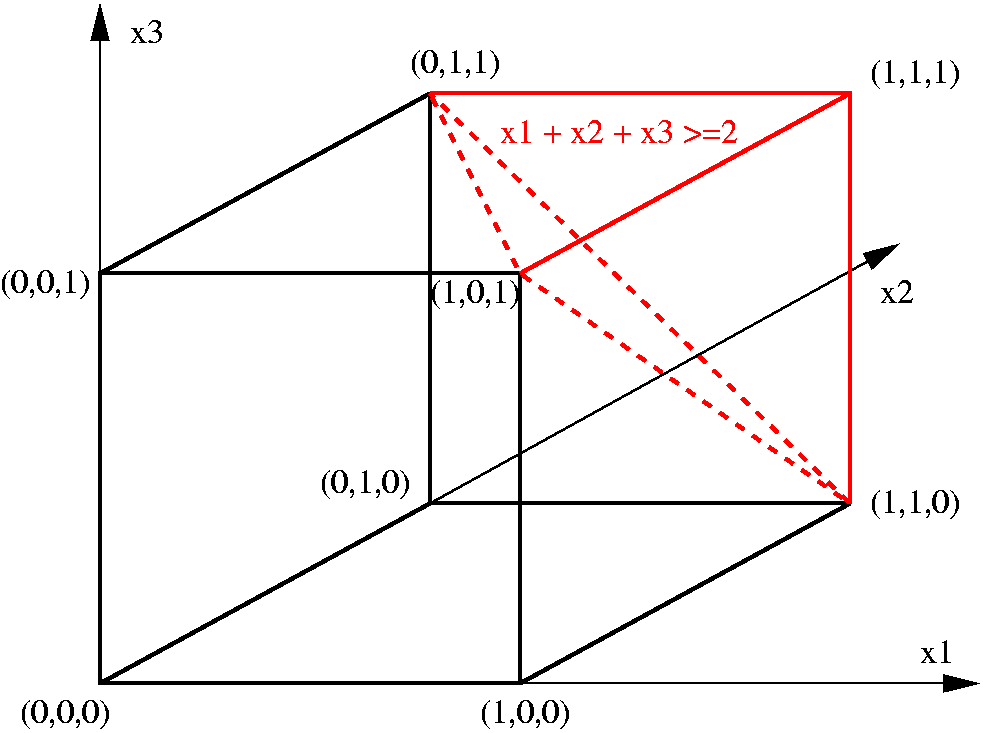|
Propositional Proof System
In propositional calculus and proof complexity a propositional proof system (pps), also called a Cook–Reckhow propositional proof system, is a system for proving classical propositional tautologies. Mathematical definition Formally a pps is a polynomial-time function ''P'' whose range is the set of all propositional tautologies (denoted TAUT). If ''A'' is a formula, then any ''x'' such that ''P''(''x'') = ''A'' is called a ''P''-proof of ''A''. The condition defining pps can be broken up as follows: * Completeness: every propositional tautology has a ''P''-proof, * Soundness: if a propositional formula has a ''P''-proof then it is a tautology, * Efficiency: ''P'' runs in polynomial time. In general, a proof system for a language ''L'' is a polynomial-time function whose range is ''L''. Thus, a propositional proof system is a proof system for TAUT. Sometimes the following alternative definition is considered: a pps is given as a proof-verification algorithm ''P''(''A'',''x'' ... [...More Info...] [...Related Items...] OR: [Wikipedia] [Google] [Baidu] |
Propositional Calculus
Propositional calculus is a branch of logic. It is also called propositional logic, statement logic, sentential calculus, sentential logic, or sometimes zeroth-order logic. It deals with propositions (which can be true or false) and relations between propositions, including the construction of arguments based on them. Compound propositions are formed by connecting propositions by logical connectives. Propositions that contain no logical connectives are called atomic propositions. Unlike first-order logic, propositional logic does not deal with non-logical objects, predicates about them, or Quantifier (logic), quantifiers. However, all the machinery of propositional logic is included in first-order logic and higher-order logics. In this sense, propositional logic is the foundation of first-order logic and higher-order logic. Explanation Logical connectives are found in natural languages. In English for example, some examples are "and" (logical conjunction, conjunction), "or" (lo ... [...More Info...] [...Related Items...] OR: [Wikipedia] [Google] [Baidu] |
CoNP
In computational complexity theory, co-NP is a complexity class. A decision problem X is a member of co-NP if and only if its complement (complexity), complement is in the complexity class NP (complexity), NP. The class can be defined as follows: a decision problem is in co-NP precisely if only ''no''-instances have a polynomial-length "Certificate (complexity), certificate" and there is a polynomial-time algorithm that can be used to verify any purported certificate. That is, co-NP is the set of decision problems where there exists a polynomial ''p(n)'' and a polynomial-time bounded Turing machine ''M'' such that for every instance ''x'', ''x'' is a ''no''-instance if and only if: for some possible certificate ''c'' of length bounded by ''p(n)'', the Turing machine ''M'' accepts the pair (''x'', ''c''). Complementary Problems While an NP problem asks whether a given instance is a ''yes''-instance, its ''complement'' asks whether an instance is a ''no''-instance, which means the ... [...More Info...] [...Related Items...] OR: [Wikipedia] [Google] [Baidu] |
Semantic Tableau
In proof theory, the semantic tableau (; plural: tableaux, also called truth tree) is a decision procedure for sentential and related logics, and a proof procedure for formulae of first-order logic. An analytic tableau is a tree structure computed for a logical formula, having at each node a subformula of the original formula to be proved or refuted. Computation constructs this tree and uses it to prove or refute the whole formula. The tableau method can also determine the satisfiability of finite sets of formulas of various logics. It is the most popular proof procedure for modal logics (Girle 2000). Introduction For refutation tableaux, the objective is to show that the negation of a formula cannot be satisfied. There are rules for handling each of the usual connectives, starting with the main connective. In many cases, applying these rules causes the subtableau to divide into two. Quantifiers are instantiated. If any branch of a tableau leads to an evident contradictio ... [...More Info...] [...Related Items...] OR: [Wikipedia] [Google] [Baidu] |
Cutting-plane Method
In mathematical optimization, the cutting-plane method is any of a variety of optimization methods that iteratively refine a feasible set or objective function by means of linear inequalities, termed ''cuts''. Such procedures are commonly used to find integer solutions to mixed integer linear programming (MILP) problems, as well as to solve general, not necessarily differentiable convex optimization problems. The use of cutting planes to solve MILP was introduced by Ralph E. Gomory. Cutting plane methods for MILP work by solving a non-integer linear program, the linear relaxation of the given integer program. The theory of Linear Programming dictates that under mild assumptions (if the linear program has an optimal solution, and if the feasible region does not contain a line), one can always find an extreme point or a corner point that is optimal. The obtained optimum is tested for being an integer solution. If it is not, there is guaranteed to exist a linear inequality that ' ... [...More Info...] [...Related Items...] OR: [Wikipedia] [Google] [Baidu] |
Polynomial Calculus
In mathematics, a polynomial is an expression consisting of indeterminates (also called variables) and coefficients, that involves only the operations of addition, subtraction, multiplication, and positive-integer powers of variables. An example of a polynomial of a single indeterminate is . An example with three indeterminates is . Polynomials appear in many areas of mathematics and science. For example, they are used to form polynomial equations, which encode a wide range of problems, from elementary word problems to complicated scientific problems; they are used to define polynomial functions, which appear in settings ranging from basic chemistry and physics to economics and social science; they are used in calculus and numerical analysis to approximate other functions. In advanced mathematics, polynomials are used to construct polynomial rings and algebraic varieties, which are central concepts in algebra and algebraic geometry. Etymology The word ''polynomial'' ... [...More Info...] [...Related Items...] OR: [Wikipedia] [Google] [Baidu] |
